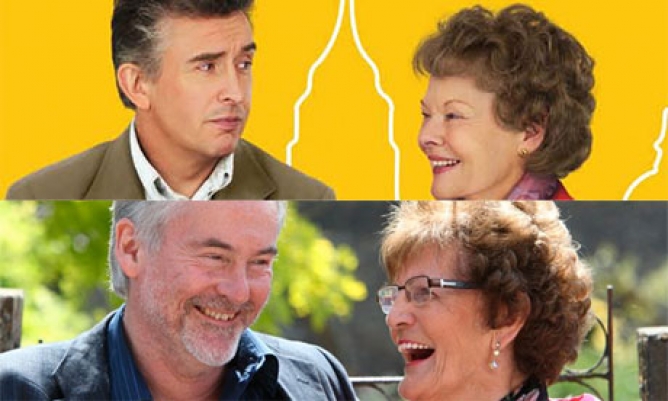Philomena: The Book Versus The Movie
Watching the film Philomena, about an unwed woman forced to give up her baby during the 1950s, left me with a lot of questions. What happened to the disgraced mother after she lost her son? Where did she go when she left the convent that housed her during that traumatic time? How did she make her way in the world, with no education and a shameful past? Did she eventually marry (in the movie she has an adult daughter)? If so, what happened to that relationship? And what were the events that transformed this naïve teenager into the simple, yet profound character depicted in this Weinstein Company’s production?
So it was with eager anticipation that I picked up Martin Sixsmith’s book, The Lost Child of Philomena Lee, hoping to learn the details that didn’t make it into the big screen adaptation.
I knew beforehand that the movie was quite different than its source material. The film focuses on the meeting of Martin and Philomena, and describes how the former journalist came to write her story. Meanwhile the four hundred page tome follows the lives of the relevant individuals as if they were telling the tale themselves—for the most part leaving the author out of it. Yet despite this forewarning, I was surprised by how dissimilar the two versions turned out to be.
The facts in the book are likely more carefully researched, and therefore more reliable, than those influenced by the artist license of the scriptwriters. (Steve Coogan, who plays Martin Sixsmith in the cinema version, penned the screenplay with the help of Jeff Pope.) Yet a reader can’t help but wonder just how much conjecture it must require to create a narrative detailing the innermost thoughts of a person, especially one whom the writer never had the chance to interview.
But that’s not my real criticism. After all, Sixsmith was never constrained to write an investigative article anymore than the filmmakers were expected to make a documentary. He was entitled to choose his own approach to the project. I’m just disappointed by his emphasis.
I guess after watching the movie, I had become quite emotionally attached to Philomena. Only about a quarter of the book describes her plight, along with the utter despair that accompanied her son’s unwelcomed adoption. And parts of that space are also used to explain the Catholic Church’s placement program and the people involved in the baby trade between Ireland and America. As for the answers I came seeking, all were wrapped up with brevity in a concluding twelve-page epilogue.
The other three quarters of the volume, are devoted to the life of Anthony Lee, who was renamed Michael Hess by his family in the United States. While I was almost as curious as Philomena to know his whereabouts, the details I found were not what I expected.
Delving into the pathos of the youngster, his feelings of abandonment and his lack of bonding with his new parents made my own maternal heart sorrow. His evolution into a gay lifestyle also aroused my sympathies. But once the story gets that far, it sort of gets stuck. Although the text is not explicitly graphic, there is a plentitude of exploration about his illicit encounters, sexual addictions, various lovers and longer-term partners.
Looking at Sixsmith’s manuscript as a whole, I sense he may be trying to draw parallels between the condemnation Philomena experienced as a sinful woman from the 1950’s Irish establishment (specifically the Catholic Church) and the prejudice Michael (formerly Anthony) faces as a homosexual in America through the 1980s and 90s (particularly from members and supporters of the Republican Party).
The movie makes a subtle comparison as well, but instead between Philomena’s secret sense of guilt and Martin Sexsmith’s public humiliation after being fired from a high-profile job. It also pits the elderly woman’s faith against the journalist’s atheism. But whereas the film shows the redemptive power of forgiveness, the story tends to focus on the hardships life often calls upon humans to endure. Still, both capture the essence of a mother’s unconditional love.
Perhaps the account in The Lost Child of Philomena Lee is more accurate. Maybe the film Philomena stretches the truth in order to shape a more satisfying ending. I don’t know, because both perspectives on her life story are subject to biases. But what I do feel with some certainty is the message of the movie tells the tale the way it ought to have happened. It creates an inspiring portrait of a courageous woman that encourages all to take the higher road, regardless of what pitfalls life may offer.
Notes:
Learn more about Hollywood star Jane Russell’s adopted Irish Baby.
Other children seek the mothers they were separated from because of the Irish Foreign Adoptions policies of the 1950-70’s.
See the Guardian’s article about the Philomena Lee, Martin Sixsmith and the Irish adoption issue.


